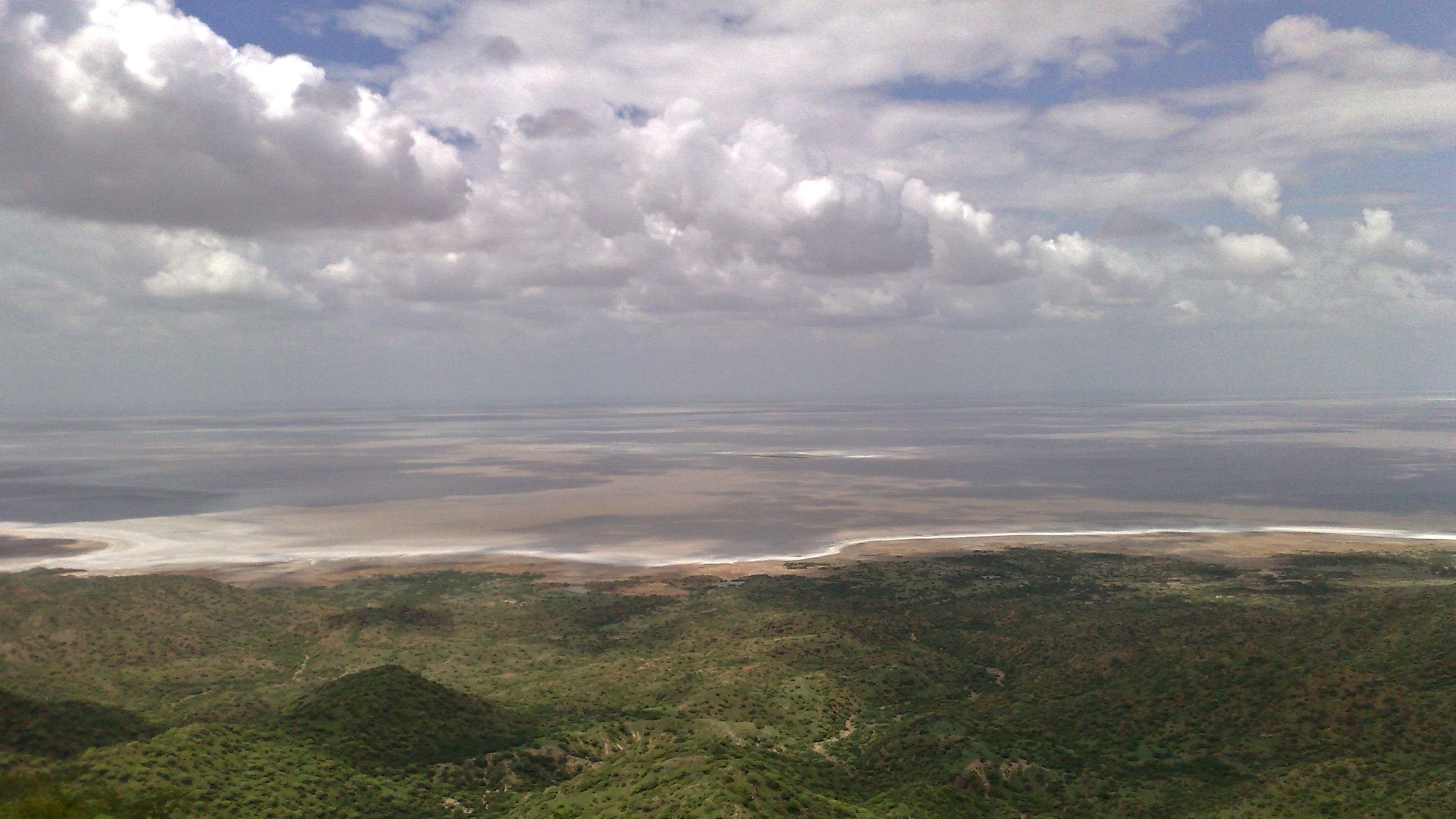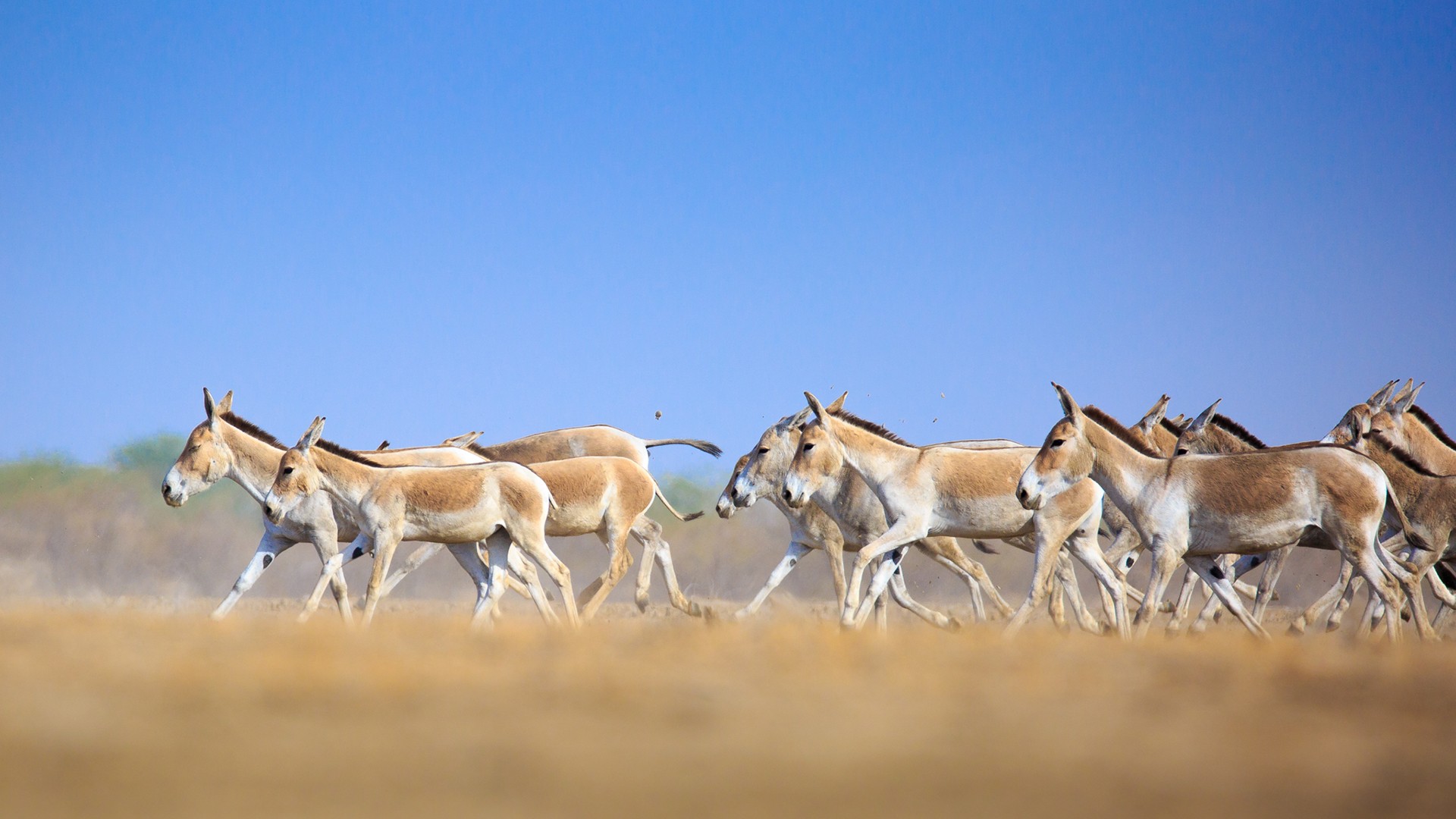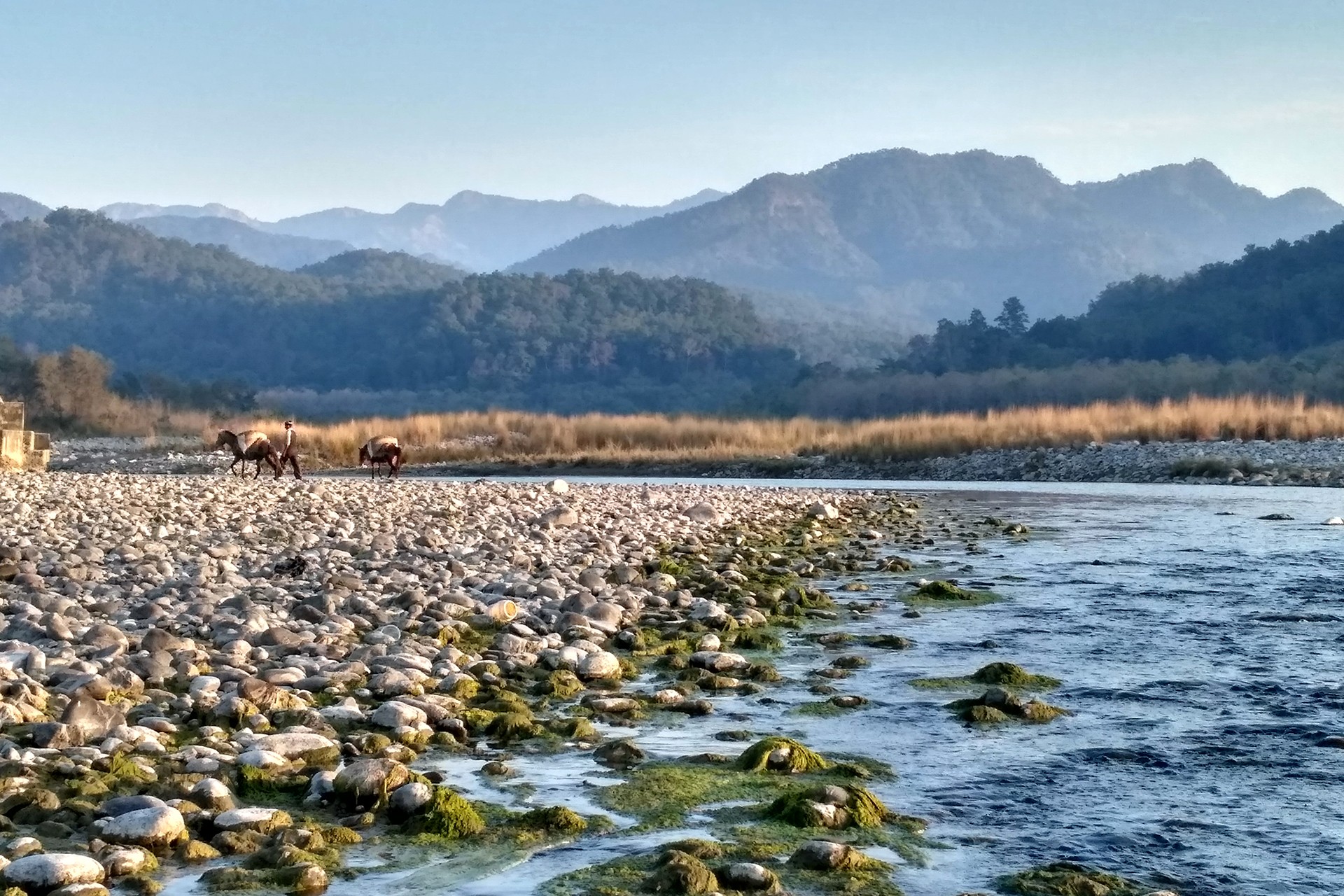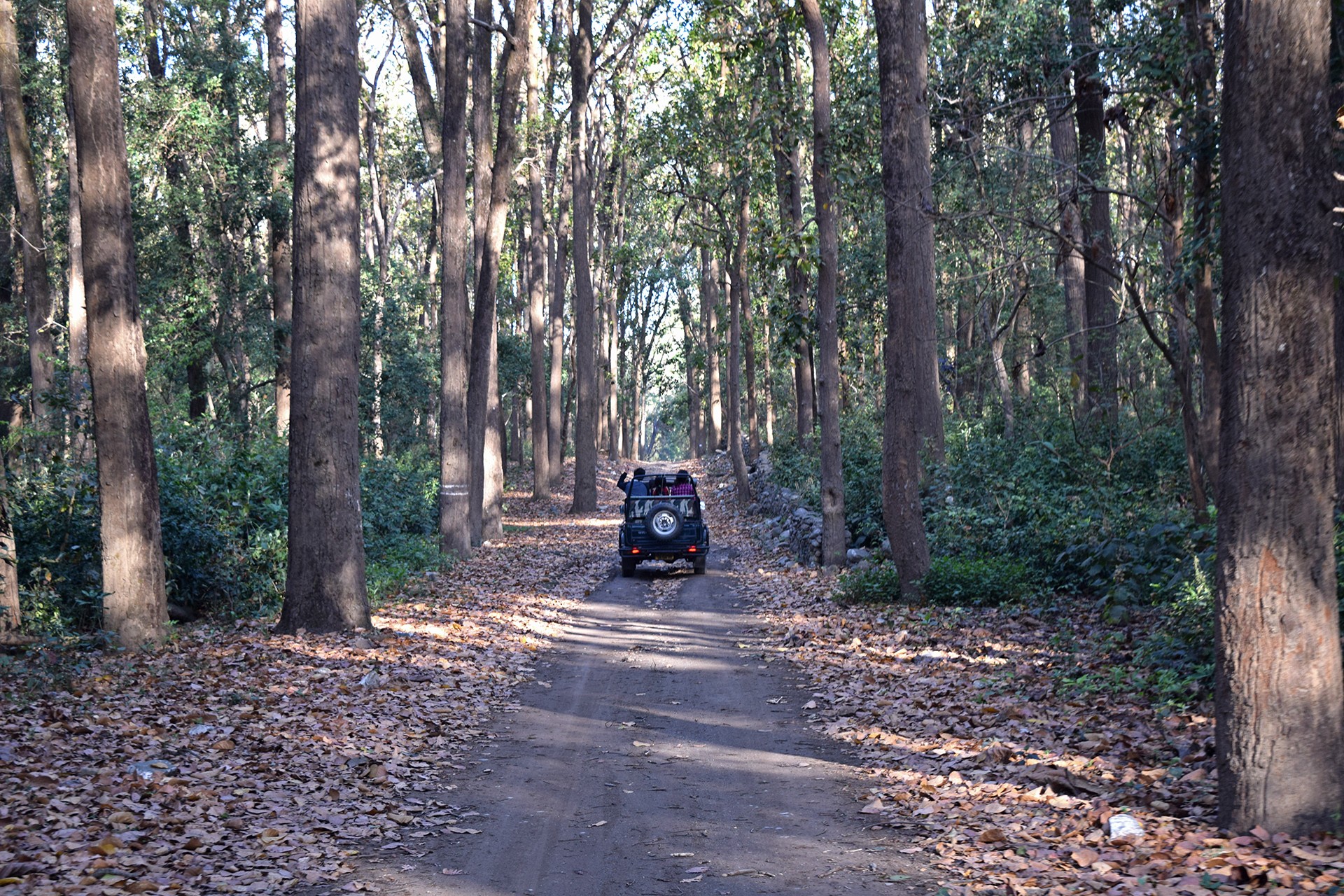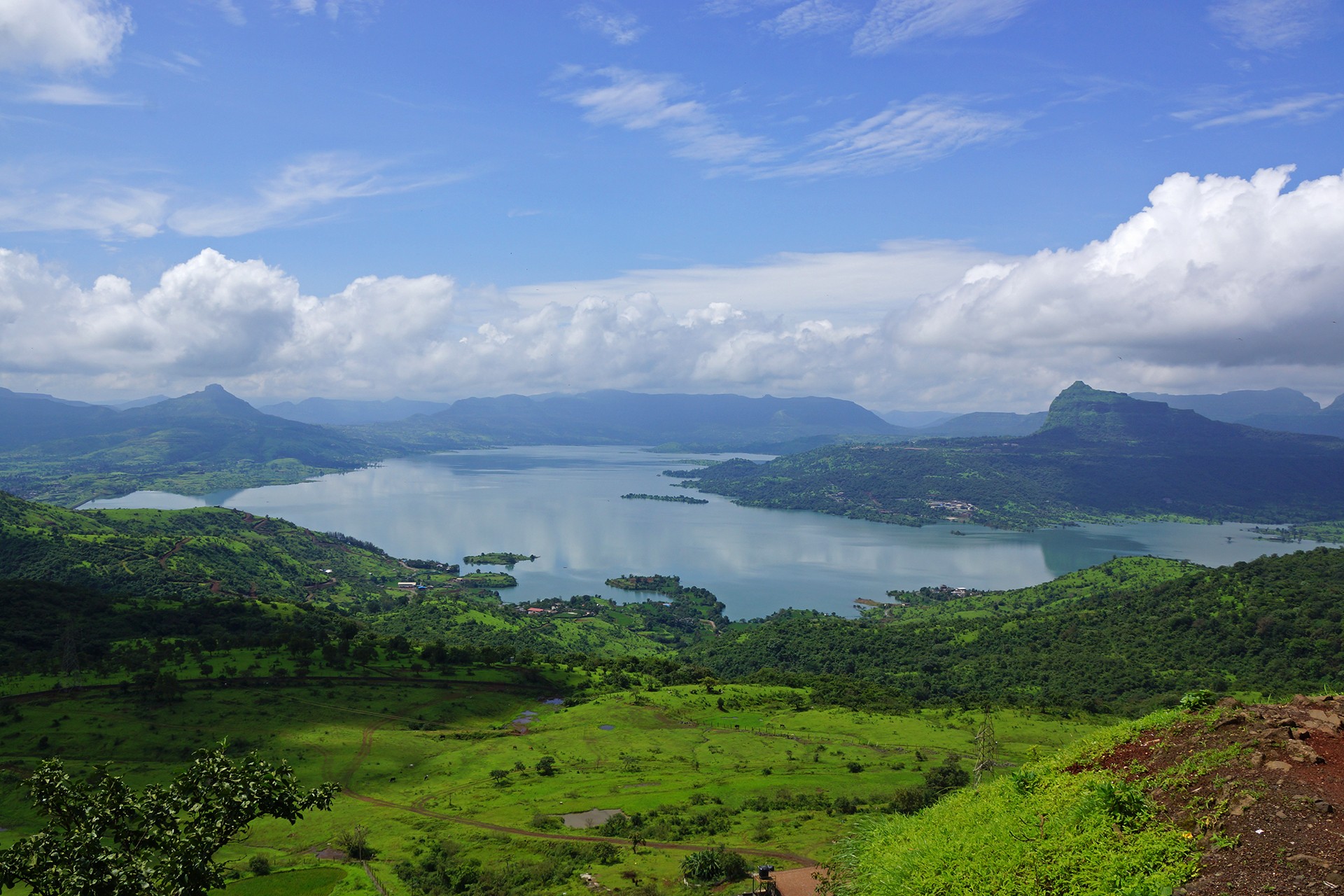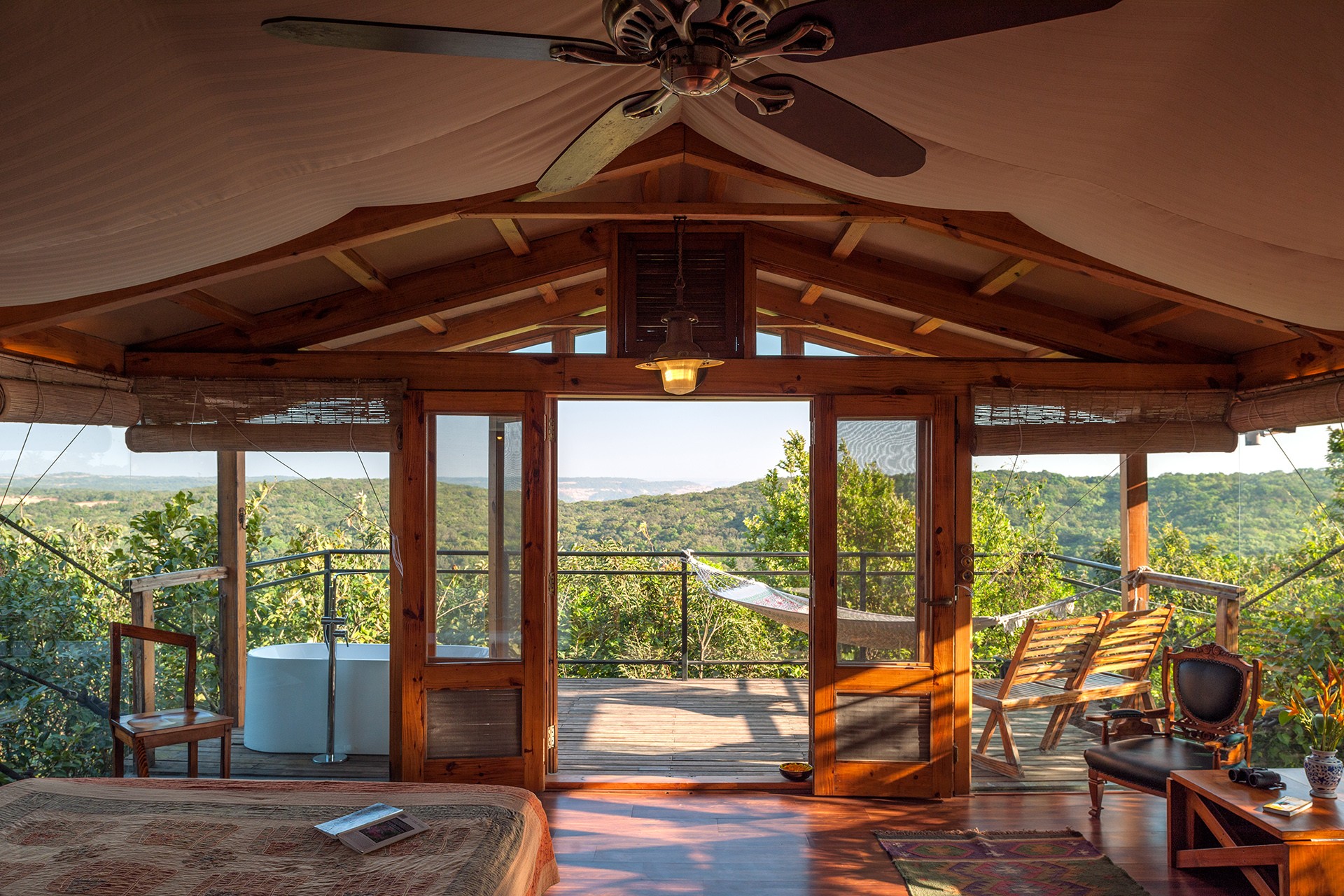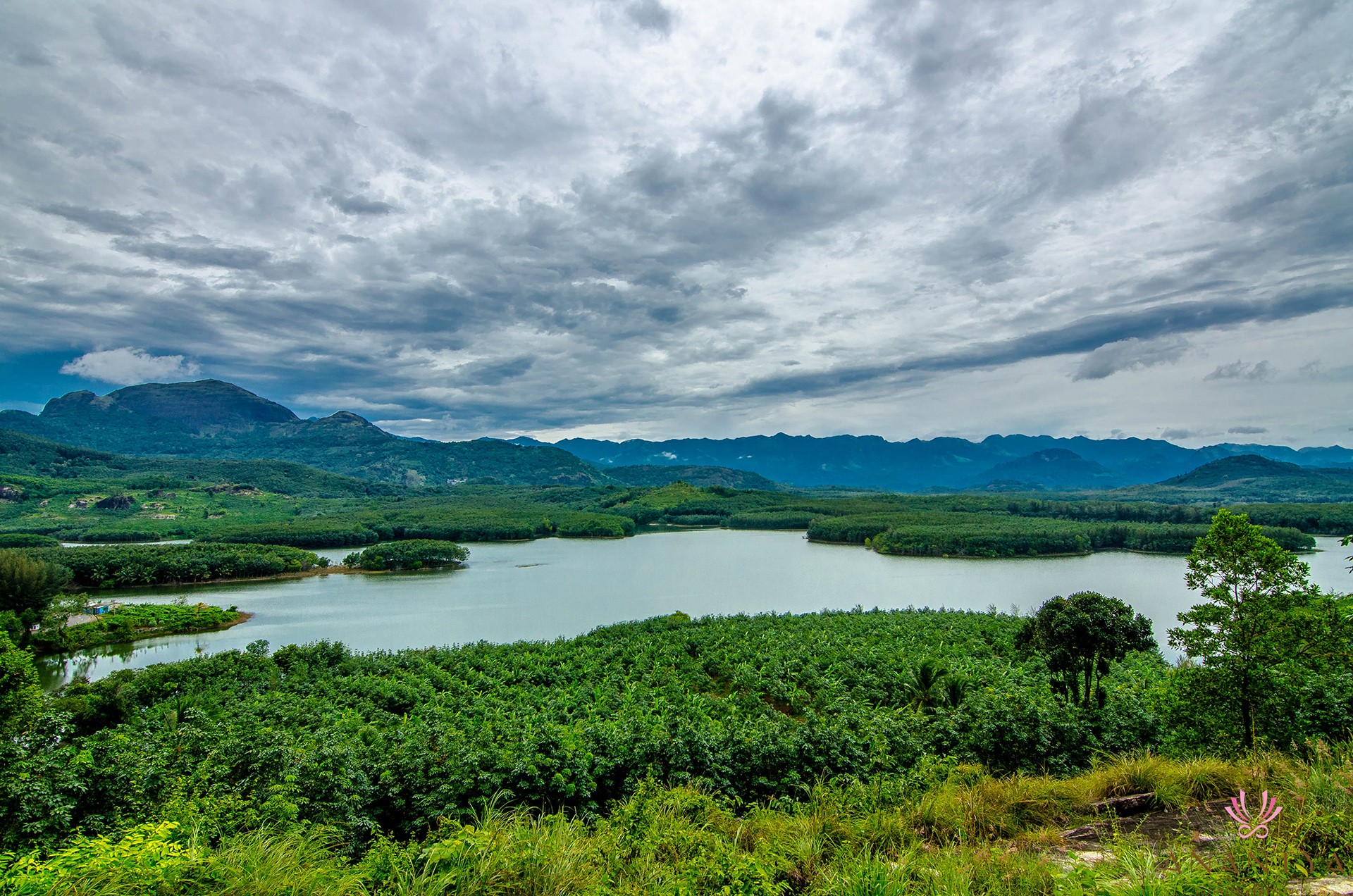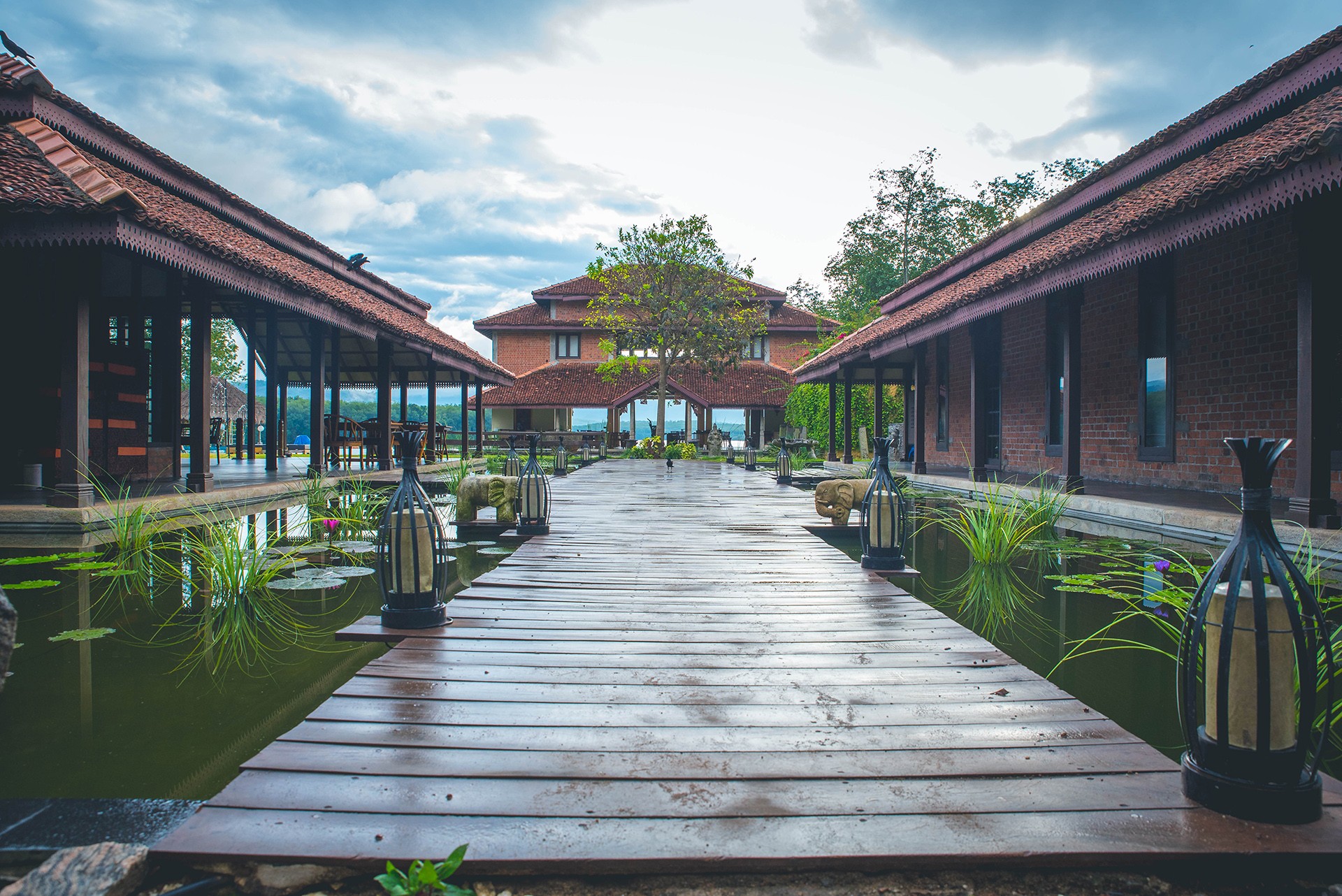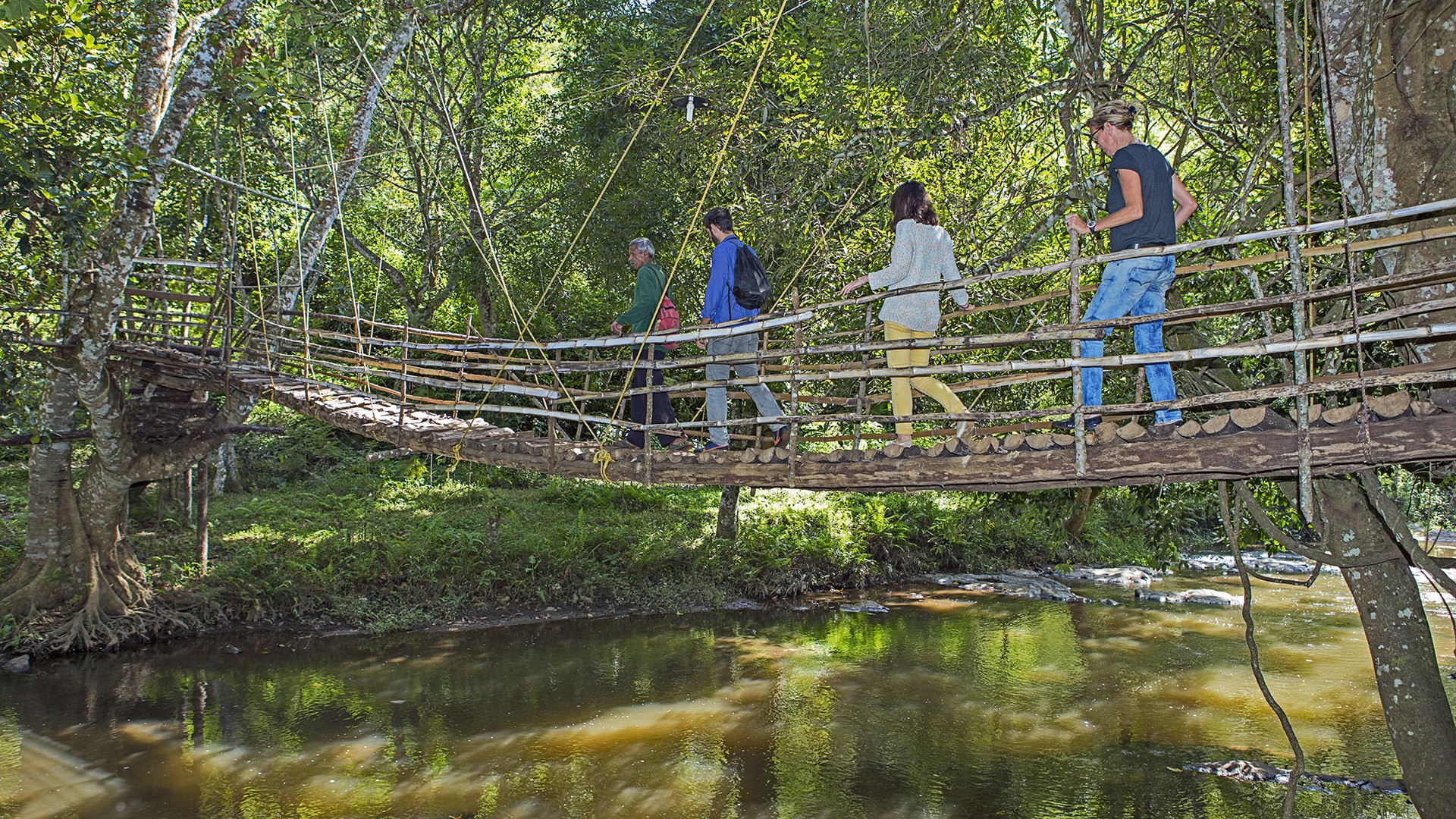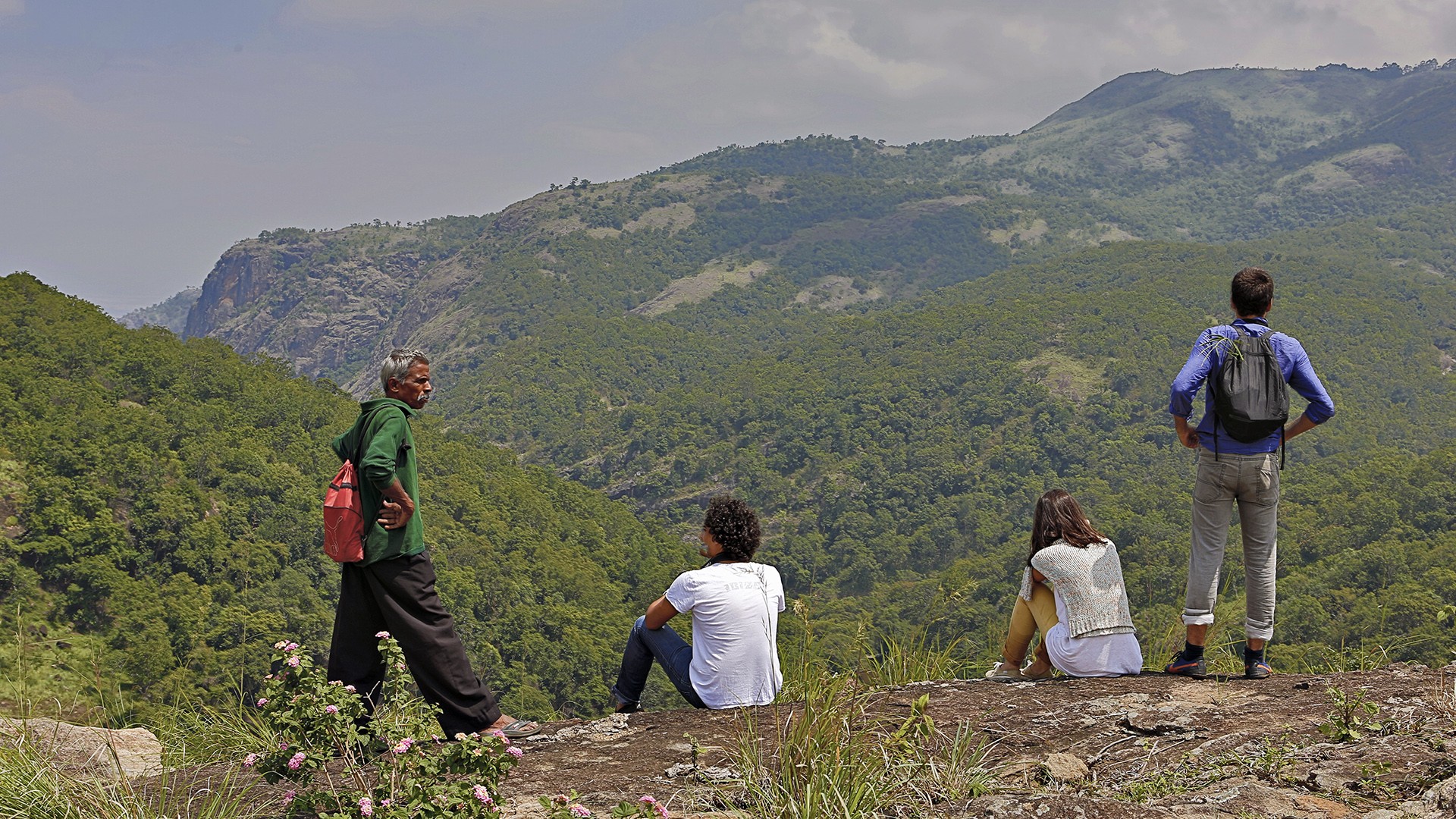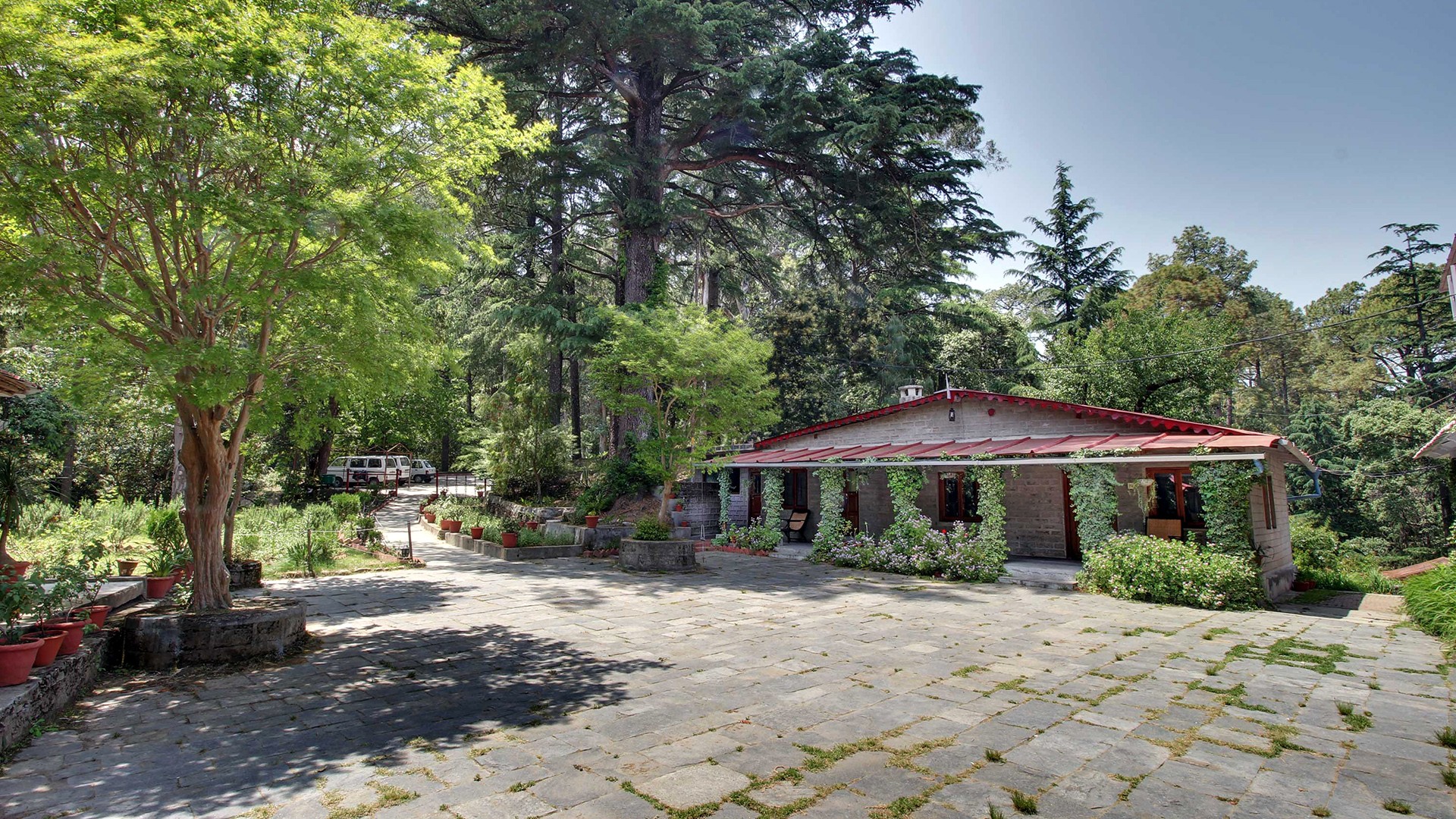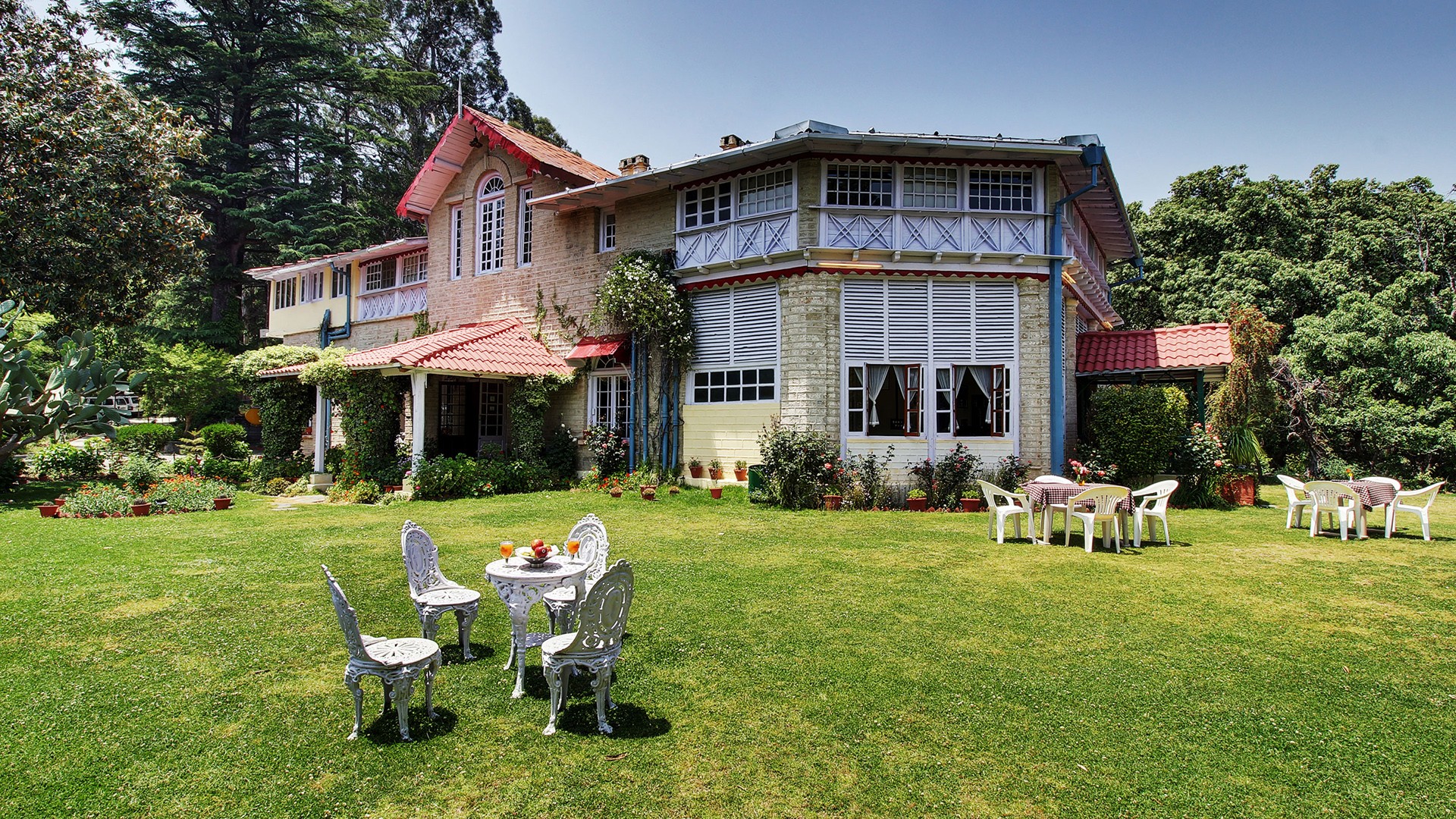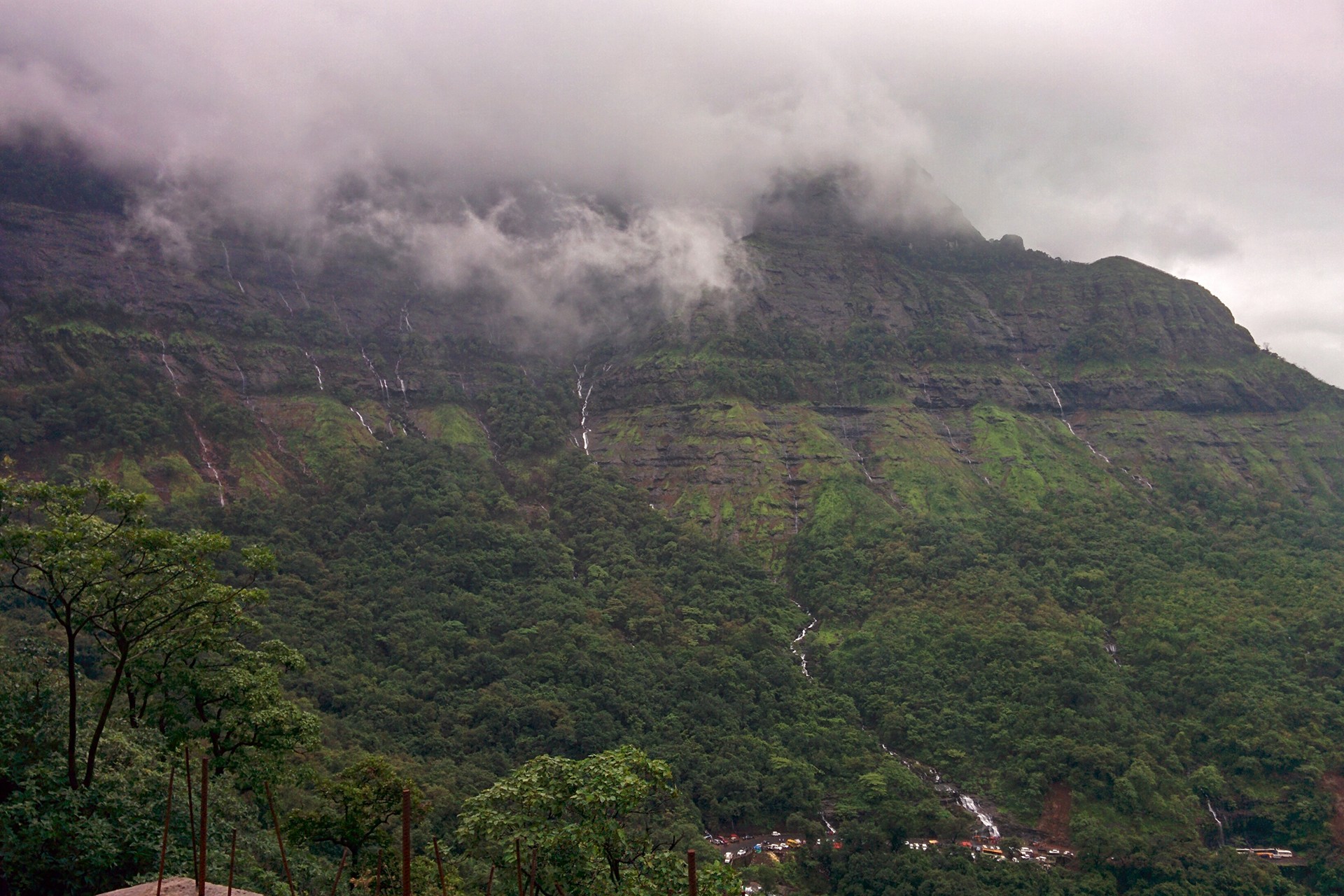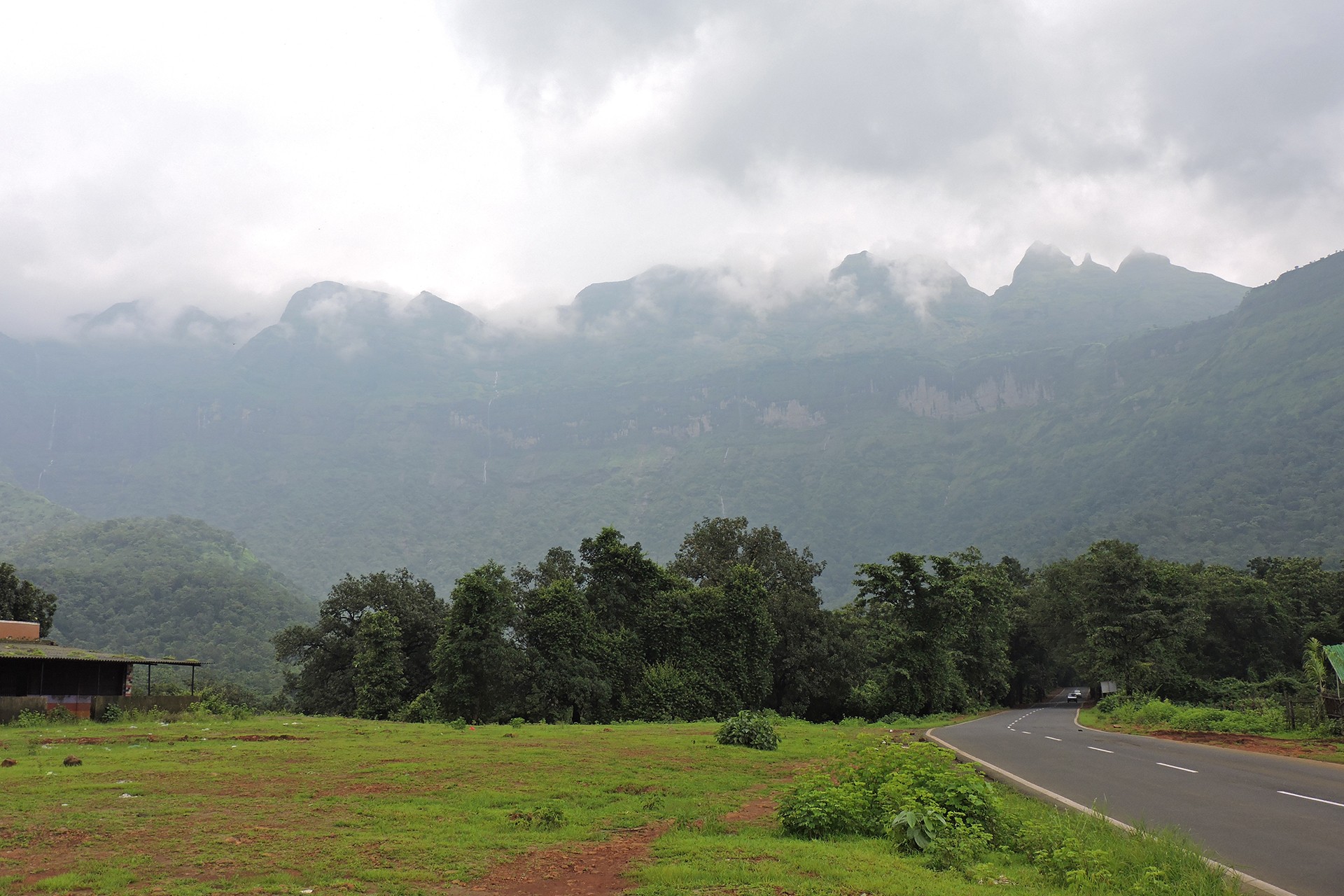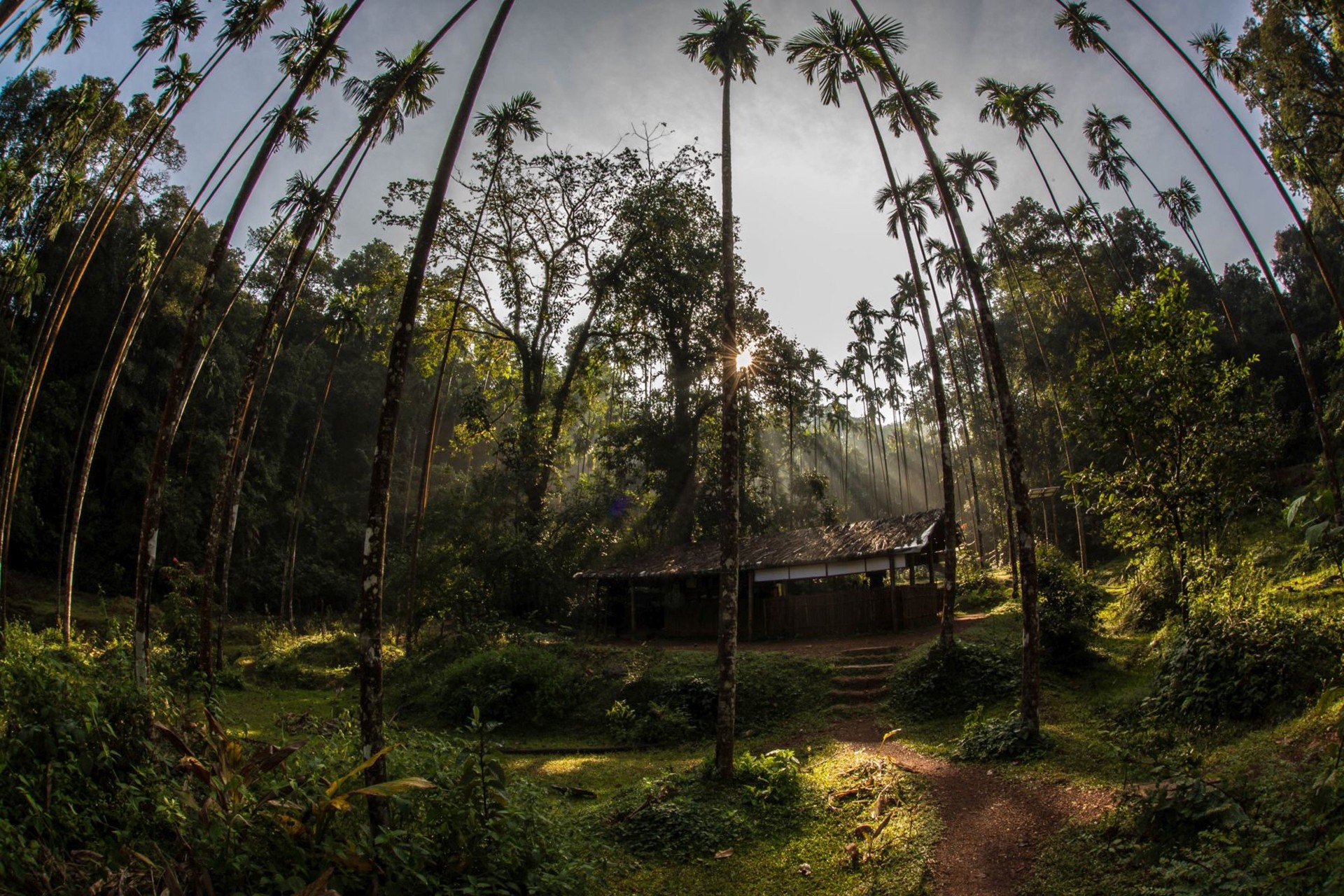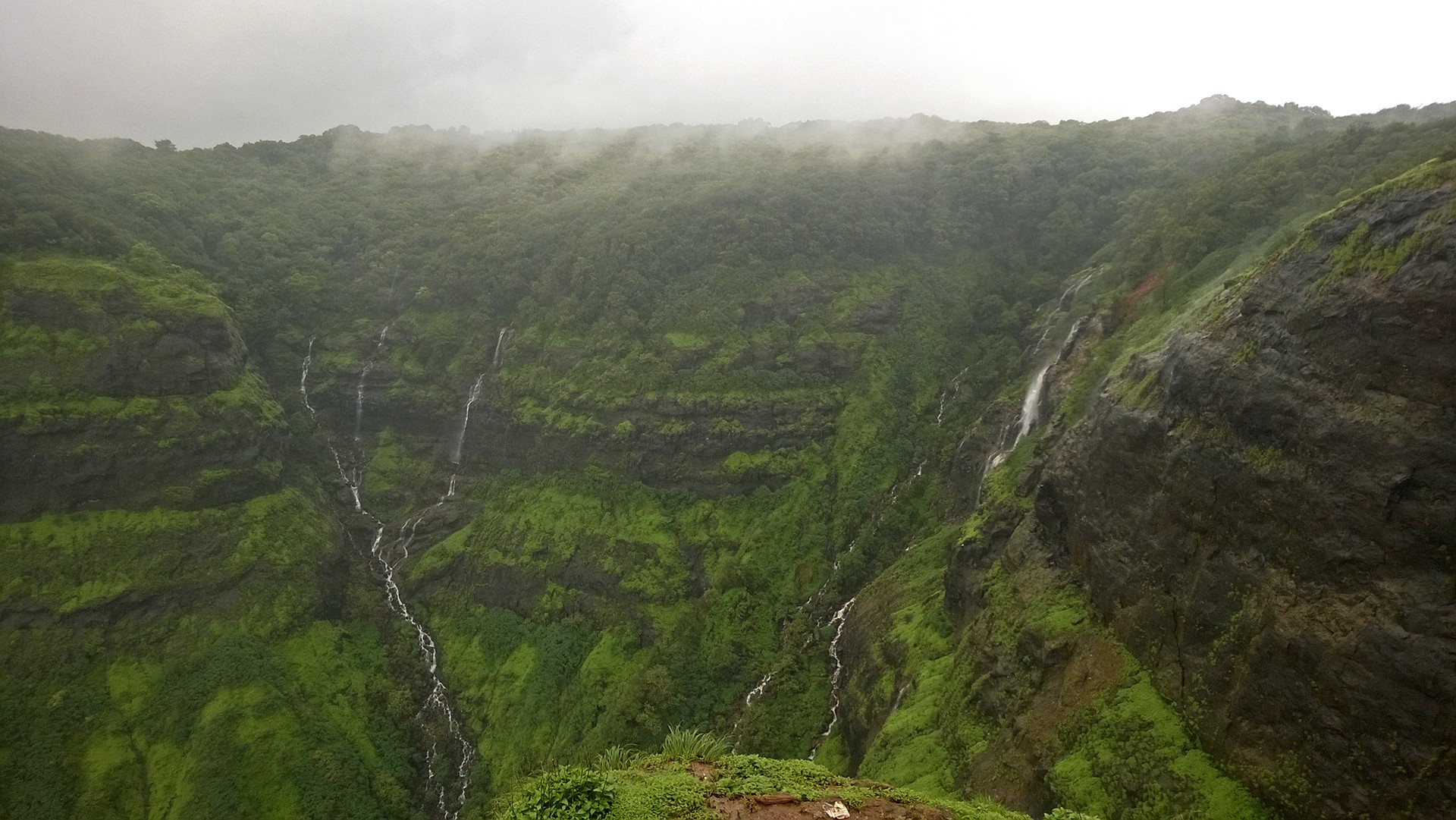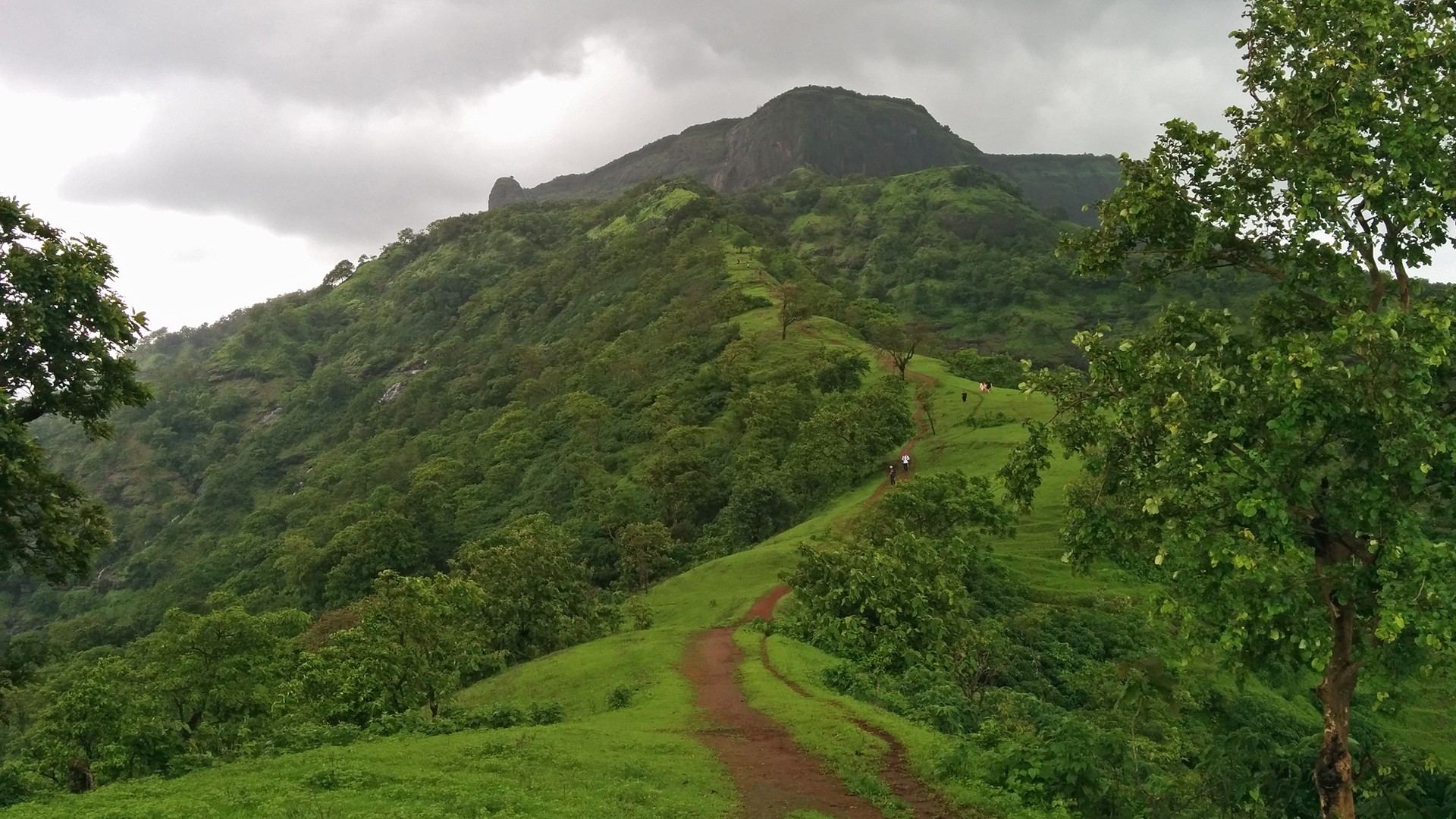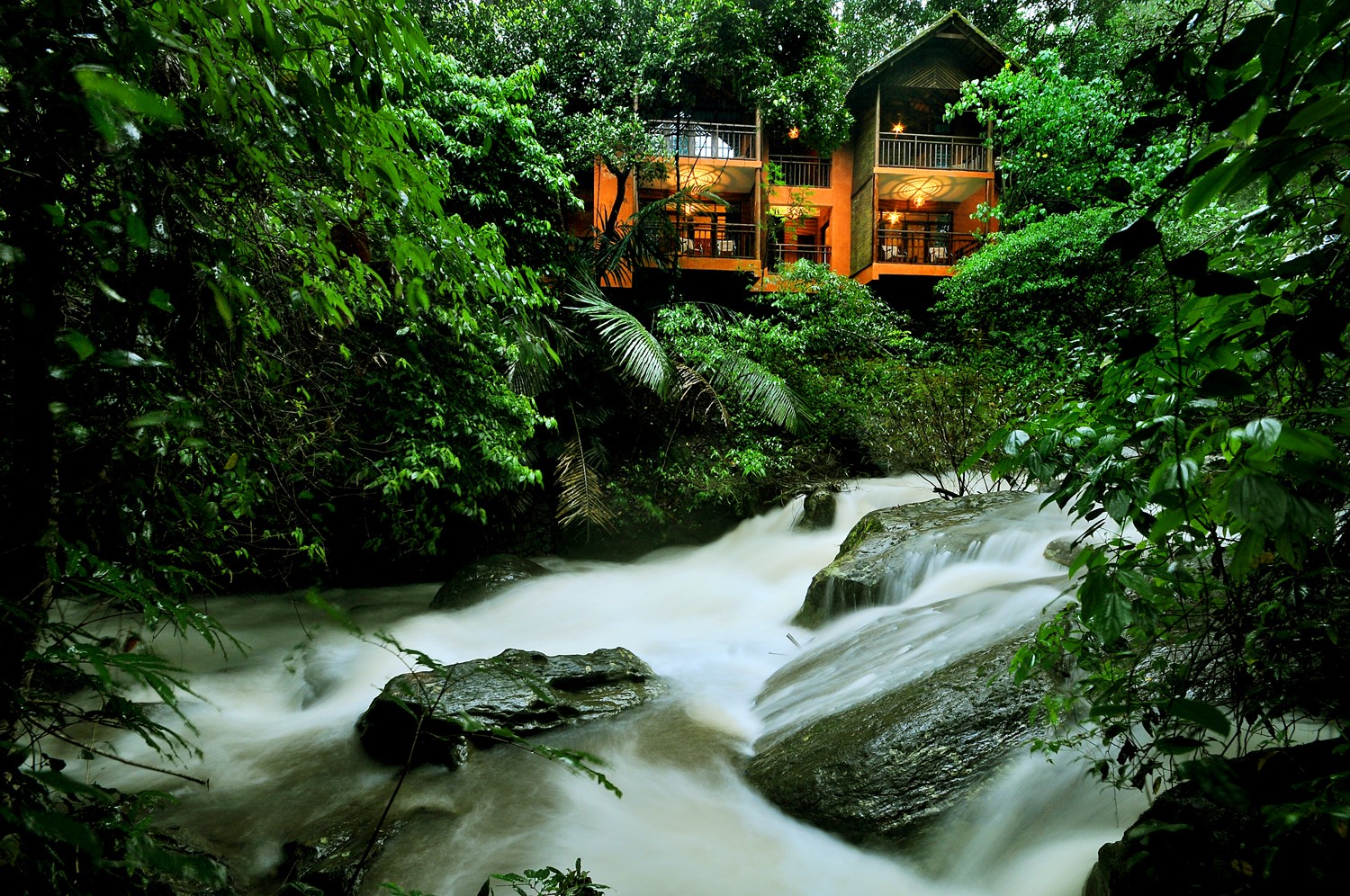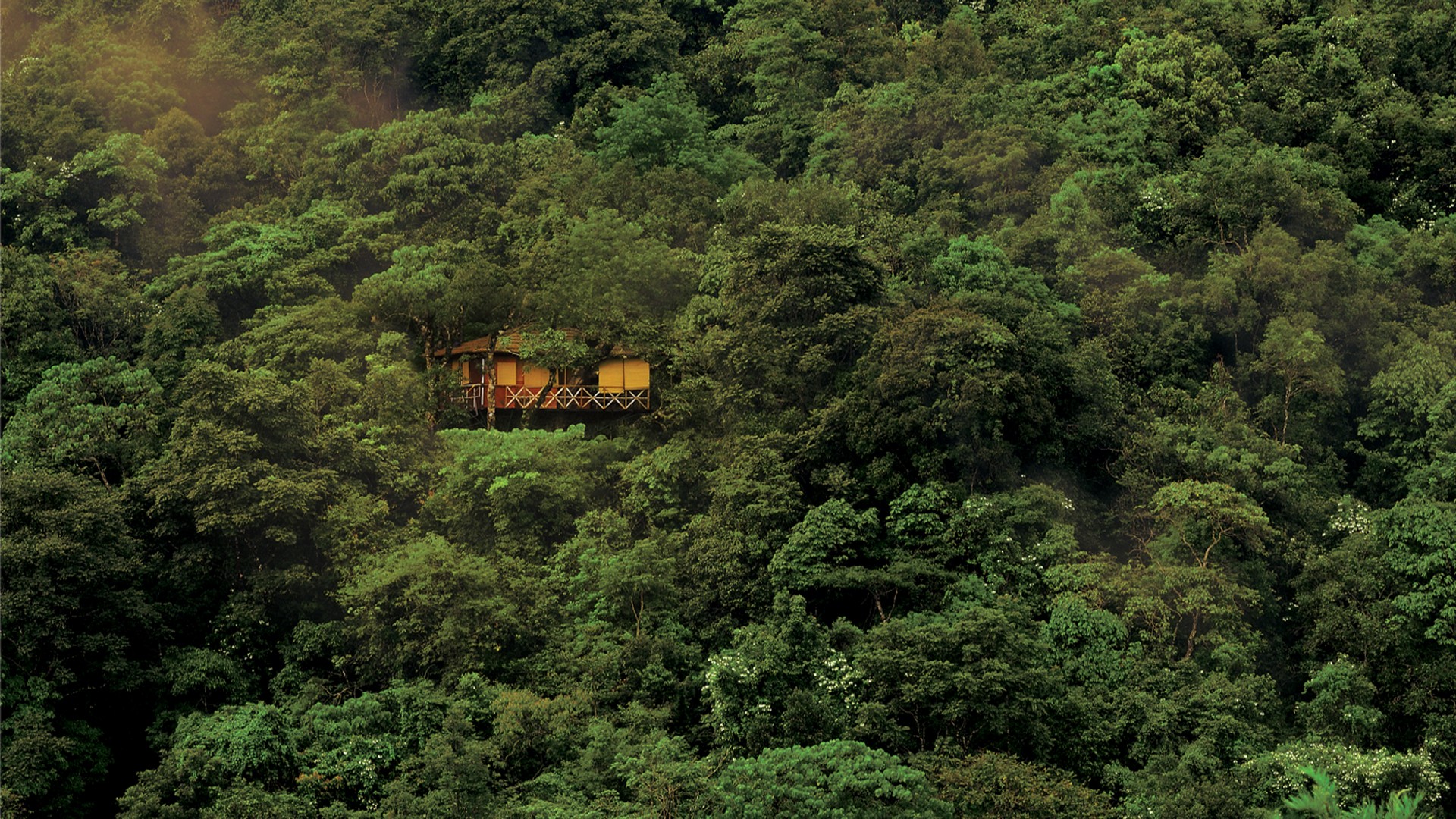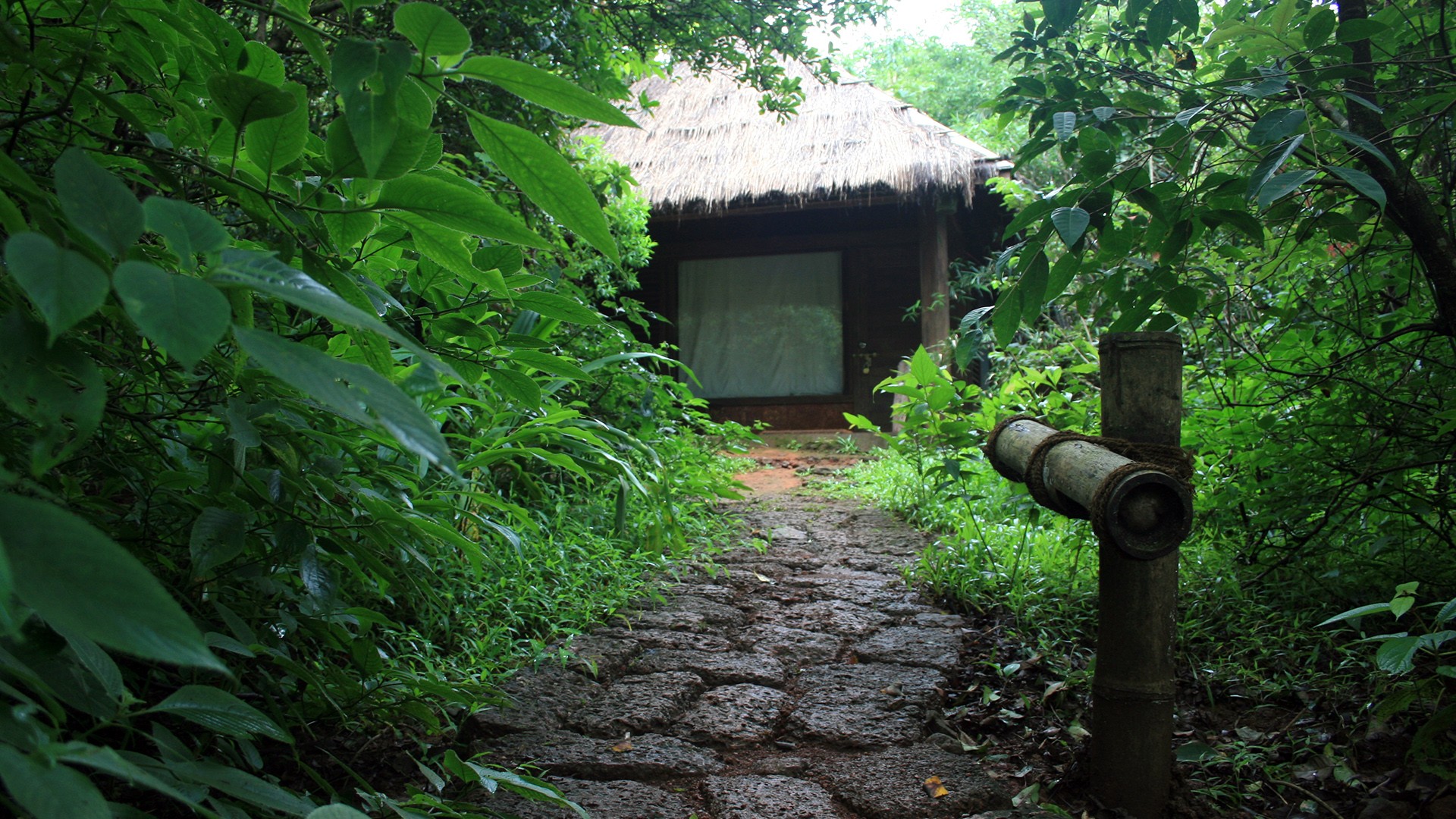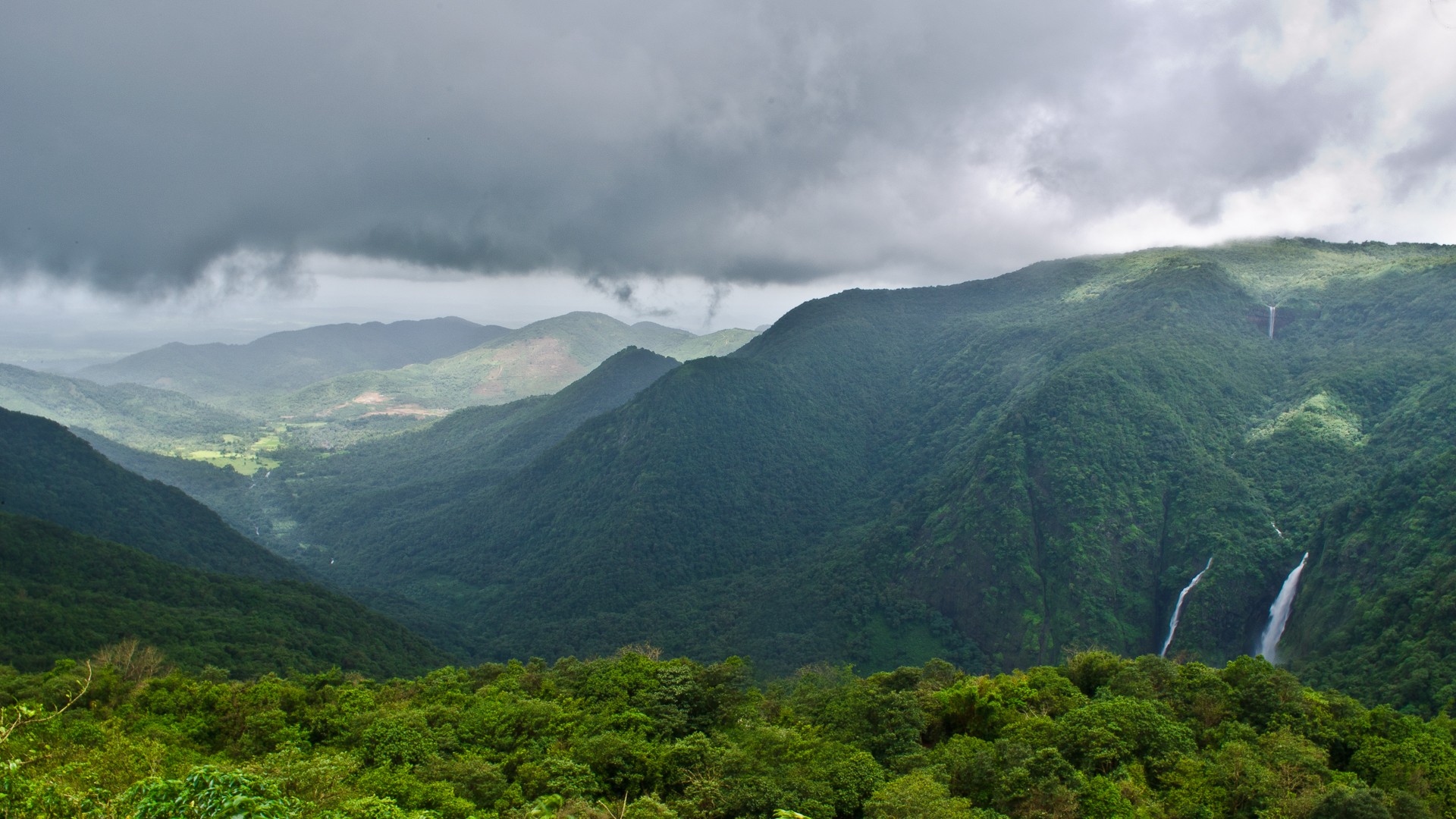Disclaimer: A few of the places we’ve picked may be the kind that the faint of heart avoid during the monsoons. But it is true that the rains bring out the best in these locations - changing landscapes, a phenomenon best experienced in person and only once a year. Go on, then.
The monsoon is a time of travel. As soon as it starts to rain, there is an unspoken, collective exodus from cities to green spaces and waterfalls. For people drawn to bouts of being soaked to the skin in the outdoors, this is the best of time of the year. For the others, the ones who take their teas, coffees and other poison, and prefer long, gorgeous windows to watch the rain and mountains from, this is still a pretty damn good time.
No matter what you want to do, we have a list for places you can enjoy the rain from, in any way you’d like - the outdoors or the indoors.
Kutch
Where: North-west Gujarat
Why: The submerged salt desert
The Rann of Kutch is usually the snowy white salt desert separating India from the Sindh region of Pakistan. During the monsoon, Kutch becomes an island separating the Gulf of Kutch from the Kathiawar Peninsula and the desert seems to transform into a sea that stretches into the horizon.
Rainfall isn’t too heavy, neither is the tourist footfall; there are likely to be only a few wet days. You can stay in the traditional, circular mud houses known as bhungas and visit village markets or haats at Ludiya (Gandhi nu Gam), Bhujodi or Ajrakhpur. Take a road trip out to Dholavira, one of the five largest Harappan sites or the Narara Marine National Park, and you may just spot some of the last remaining population of the khur, or Indian Wild Ass (Equus hemionus khur) loitering about near the roads. For more information, check out our detailed guides to the Little Rann and the Great Rann of Kutch.
Where to stay and watch the rain from: Stay at Desert Coursers (₹2,500/ night), a 1984 resort designed as a traditional Kutch village, which is a go-to for birders and other wildlife enthusiasts - you can spot over 70 species of birds right here.
Jim Corbett National Park
Where: Nainital district, Uttarakhand
Why: An opportunity to have the forest all to yourself
As the monsoon is breeding season for a number of animals, three out of Corbett’s four zones are closed to visitors at that time. Jhirna zone and its buffer areas, however, remain open and give you access to the wildlife of Corbett at a time when there are few others in the forest to share its sights and sounds with.
Jeep and elephant safaris are both possible at this time, and it’s even easier to come across boars, deer, quails and barbets; with no paucity of water in the lakes and ponds, animals are often at their playful best (get permits for safaris before time). Rafting is also possible only now, as the Kosi doesn’t have enough water for this the rest of the year. Perhaps, an important reason to go to Corbett in the monsoon - safaris and people at a time when poachers would expect empty forests .
Where to stay and watch the rain from: Corbett Jungle Lore is right on the fringe of Corbett National Park, by the river Kosi. During the day, head out for safaris or walk around the forest bird-watching. At night, let the wildlife watch you, instead while you sit by a bonfire listening to animal calls (₹ 8,999 for a 2-night/3-day package including all meals).
Jambulne
Where: In the heart of the Western Ghats at Jambulne, Maharashtra
Why: A bird’s-eye view of the birds amidst treetops
Where to stay and watch the rain from: 18 years ago, the team at The Machan launched into an intensive restoration effort to bring back the pristine woodiness of this 25-acre forest, which is now home to over 20,000 indigenous trees. From your treehouse about 35-40 feet off the ground, you’ll have a panoramic view of the forests of Jambulne, as well as the many, many birds that its canopies host. Have a look (and hear) the birds, resident as well as migratory that you can spot at The Machan here. You can also venture out and go on a guided trek right on the property itself, and explore the Western Ghats.
Located about 17km from Lonavala, The Machan (₹8,000 - ₹14,000/ night) is based on conscientious, sustainable tourism principles. They support local communities (50 per cent of their staff is locally employed and trained in-house), run completely off-grid on solar-generated power (and even supply electricity to the neighbouring village), channel a part of their profits into conservation efforts and support environmental researchers studying the Western Ghats.
Kanyakumari (erstwhile Cape Comorin)
Where: Southernmost tip of Indian peninsula, in Tamil Nadu
Why: It’s the first place to be hit by the South West monsoons
Surrounded by water on three sides, Kanyakumari is as low as you can go in the Indian subcontinent. You will be literally at the edge of mainland India and the edge of the ocean, no, three oceans - the Arabian Sea, the Lakshwadeep Sea and the Indian Ocean.
Watch the tides hit the rock island that is home to the Vivekananda Rock Memorial, which was carved out of a single rock, and the neighbouring 133-feet high statue towering over it, a rendition of the celebrated Tamil poet, Thiruvalluvur. Relax at the peaceful Sanguthurai beach, or go check out the continent’s longest and tallest trough bridge, the Mathur Hanging Bridge. This is lean tourist season in Kanyakumari (July and August see heavy rainfall, June and September not so much), so you’ll get some good deals on accommodation and travel.
Where to stay and watch the rain from: Get a sea-facing room at the Sparsa Resorts (₹4,000/ night), barely a kilometre from the Vivekananda Memorial. Or pamper yourself at the Anantya Resorts, (₹7,000/ night) on the banks of the Chittar Lake, about an hour from the coast in the midst of rubber plantations. You can trek up the hill and enjoy the rain-washed skies, or hike around the plantations and discover the spontaneous streams that pop up in the monsoons. Host recommendation: Don't act your age for awhile, and drop paper boats into Anantya's lily ponds and race them around - it's even more fun in the rain!
Kodaikanal
Where: On the southern crest of the Palani Hills, Dindigul district, Tamil Nadu
Why: Misty mountain hops and purple Kurinji blooms
There may be a few slippery slopes here and there to deal with, but light drizzles add to the charm of Kodaikanal, which receives moderate rainfall during the monsoons.
The Bear Shola Falls and the Silver Cascade come alive during the rains, and temperatures are quite pleasant for a change. Photographers will love the dewy takes on the Berijam Lake, the man-made Kodai Lake and the lush green hues of the Western Ghats during these months. Head on to the Kodaikanal Solar Observatory or the Natural History museum at Sacred Heart College on the days you’d rather be indoors.
Where to stay and watch the rain from: You’ll have to drive 20 kilometres out of the city to get to the Elephant Valley Eco Farm (₹4,000/ night), but you’ll be rewarded with river-side views, gourmet food from their organic farm and forays into the wilderness with a nature guide. Another great option is Zac’s Valley Resort (₹4,000 - ₹7,000/ night), designed by nature lovers for nature lovers.
Ranikhet
Where: The Kumaun region of Uttarakhand
Why: Treks in the rain, especially to the Valley of Flowers.
August is perhaps one of the best times in the year to visit Ranikhet, as young flowers and plants spring out of the earth after monsoon showers. On a clear day after the rains, you’ll have the lofty snow-clad peaks of the Himalayas breaking the blue of the skies.
Visit the Chaubatia Orchards and feast on some of the best apples, peaches and plums as you gaze at the Nanda Devi. Or head on to Dwarahat, a small archaeological town closeby that’s dotted with ancient temples. If you have the time to travel further northwards, July and August are also the best (and usually only) time for you to trek to the Valley of Flowers, a UNESCO World Heritage Site known for its sprawling alpine meadows which burst into a sea of multi-coloured blooms. The area is also home to the Asiatic Black Bear, Snow Leopard, Musk Deer, Brown Bear, Red Fox, Blue Sheep and the Himalayan Monal.
Where to stay and watch the rain from: Stay at the Windsor Lodge (₹6,500 - ₹7,500/ night), the only heritage property in Ranikhet. Atop a hill overlooking the Himalayan peaks and cedar forests. Another great option is Hotel Chevron Rosemount (₹2,500 - ₹4,000/ night) that’s closer to city, with lovely rooms and an equally lovely view.
Malshej Ghat
Where: Mountain pass in the Western Ghats, Thane-Pune, Maharashtra
Why: Waterfalls and birds
Between July and September every year, flocks of European flamingoes touch down at the Pimplagaon-Joga Dam here on their way from Siberia; lucky travellers may just get to see their dramatic mating dance. Birdwatching opportunities abound, as the ghat is home to rails, crakes, quails and cuckoos. Watch out for the Bay-backed Shrike, the Siberian Stonechat, the Little Ringed Plover, Richard’s Pippit and the Wire-tailed Swallow. The Bombay Natural History Society (BNHS) runs a monsoon camp at Malshej Ghat every September, taking campers in search of the Indian Giant Squirrel.
Where to stay and watch the rain from: Stay at Saj by the Lake (₹6,000/ night) near Malshej. You can pick between a lake view, a mountain view or a farm view. It isn’t too far from all the places you could visit nearby, such as Harishchandra Gad and Shivneri, and still gives you enough to do and see if you stay at the resort.
Agumbe
Where: Shimoga district, Karnataka
Why: It’s the ‘Cherrapunji of the South’
Agumbe lies in a rainforest region, and has a warm tropical monsoon climate. While it is known as the King Cobra capital of the world, you’ll also come across other stunning herpetofauna such as the Ornate Flying Snake, Green Vine Snake, Malabar Gliding Frog and the Southern Flying Lizard here. The night trails offer some unique experiences of the rainforest, when the nocturnal reptiles and amphibians are out and about. The country’s very first automatic weather station was set up here by renowned herpetologist Romulus Whitaker in 2009 to monitor changes in the rainforest. For a detailed guide to Agumbe and the immense herping possibilities here, check out our guide here.
Where to stay and watch the rain from: The Kālinga Centre for Rainforest Ecology in the heart of Agumbe at Guddekere was set up as a self-sustaining conservation centre. KCRE conducts workshops, nature camps as well as field studies aimed at conservation of the Western Ghats. While it isn’t designed as a tourist resort, they have basic facilities and welcome visitors all the year round. It’s a good mid-range option, that also offers tented accommodation (₹2,000/ night). Write to [email protected] and plan your stay.
Matheran
Where: Matheran in Maharashtra
Why: Sip a hot cuppa, sitting on a literal verandah in the forest
Where to stay and watch the rain from: The Neemrana property Verandah in the Forest (₹4,000 - ₹8,000/ night) is a sprawling old-school, 19th-century heritage structure in Matheran. The main verandah that overlooks an expanse of green is a downright delight in the rain. Leave your worries (and transportation) behind at Dasturi, about 4.5km from the hotel, the second building ever to be built in the Western Ghats. There are no televisions in the room but the views of the jungle promise to make up for it! Don’t forget to take along your walking shoes, umbrellas and raincoats for when you venture out.
Vythiri Resort
Where: Wayanad, Kerala
Why: Listen to the sounds of the rainforest
Vythiri is a small town in the hilly district of Kerala. The rainforests are part of the Nilgiri Biosphere Reserve, a UNESCO World Heritage site, which is home to over a 100 species of mammals, 350 species of birds and countless other wildlife - including the Lion-tailed Macaque and Nilgiri Tahr, which are both found only in the Nilgiris.
Where to stay and watch the rain from: Stay at the Vythiri Resort (₹15,000 - ₹30,000/ night) in Lakkidi, Wayanad. Their villas and cottages are spaced out well enough to give you a deeply personal experience, and for those who prefer something different, pick one of their treehouses in the lush canopy of the rainforest.
Konkan Coast
Where: Konkan coast in South-western India
Why: High tides top up your experience of this seaside state
The Konkan coast drive has the potential of the quintessential rain trip. Driving down Igatpuri, Ganpatiphule, Ratnagiri, stopping at thali places in small village restaurants, with the sea being your constant road companion - this a the stuff of great road trips.
You can stop at Goa, or drive on to Gokarna. Goa is perhaps a tad too crowded most of the year, but it made our list because the monsoons bring back what’s quaint and peaceful about it in the first place. Most beaches may be off-limits because of high-tide, but they make for a gorgeous view as the rain hits the oceans, from the window of the fab hotel you booked at half-price because of the off-season discount.
Where to stay and watch the rain from: Surround yourself with monsoonal diversity and stay at either Swapnagandha (₹9,000/ night) or Wildernest (₹7,000/ night), overlooking the 143-metre Vazra Sakla waterfall in the Chorla Ghats, a designated Important Bird Area.
